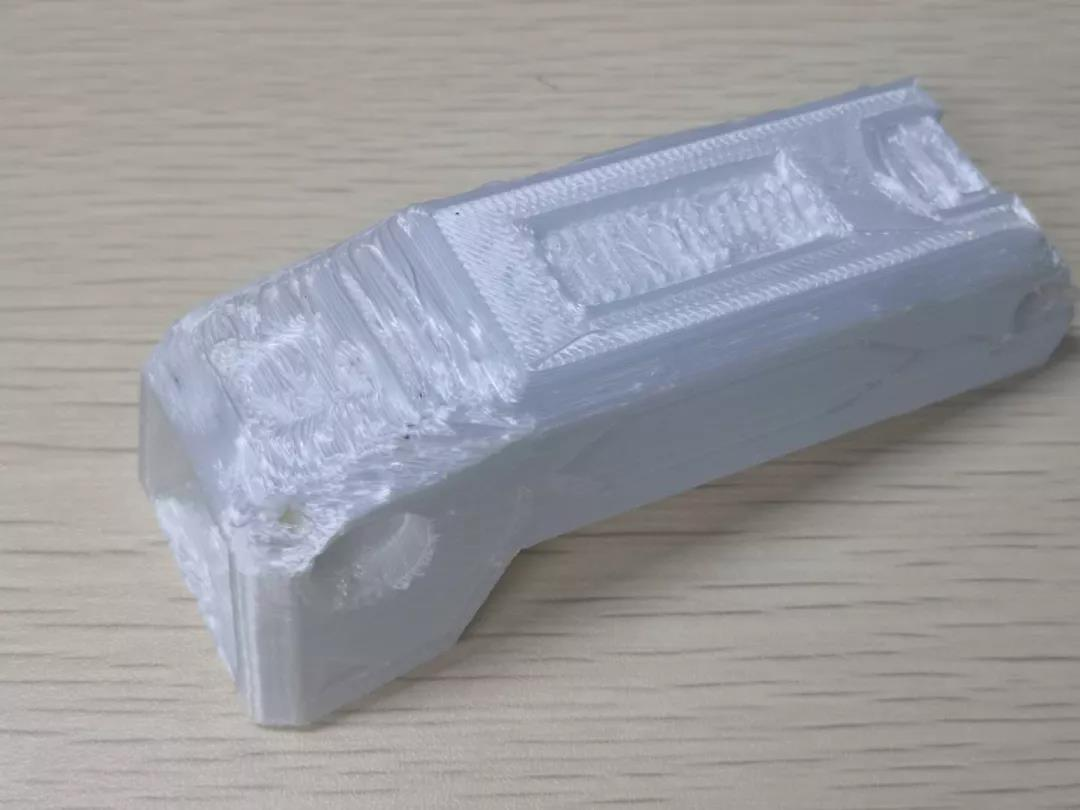WHAT’S THE ISSUE?
After slicing the files, you start printing and wait for it to finish. When you go the final print, it looks good, but the parts that overhanging is a mess.
POSSIBLE CAUSES
∙ Weak Supports
∙ Model Design Not Appropriate
∙ Printing Temperature Not Appropriate
∙ Printing Speed too Fast
∙ Layer Height
The process of FDM/FFF requires that each layer is built upon another. It therefore should be obvious that if your model has a section of the print that has nothing below, then the filament will be extruded into thin air and will just end up as a stringy mess rather than an integral part of the print.
Really the slicer software should highlight that this will happen. But most slicer software will just let us go ahead and print without highlighting that the model requires some type of support structure.
TROUBLESHOOTING TIPS
Weak Supports
For FDM/FFF printing, the model is built by superimposed layers, and each layer must be formed on top of the previous layer. Therefore, if parts of the print are suspended, it will not get enough support and the filament just extrudes in the air. Finally, the printing effect of the parts will be very bad.
ROTATE OR ANGLE THE MODEL
Try to orient the model to minimize the overhang parts. Observe the model and imagine how the nozzle move, then try to figure out the best angle to print the model.
ADD SUPPORTS
The quickest and easiest way is to add support. Most slicing software has the function of adding supports, and there have various kinds of types to choose and density setting. Different types and density provide different strength.
CREATE IN-MODEL SUPPORTS
The support that the slice software create sometimes will damage the surface of the model and even stuck together. So, you can choose to add internal support to the model when you create it. This way can achieve better results, but requires more skill.
CREATE A SUPPORT PLATFORM
When printing a figure, the most common suspended areas are arms or other extension. The big vertical distance from arms to print bed can cause problem when removing these fragile supports.
A better solution is to create a solid block or wall under the arm, then add a smaller support between the arm and the block.
BREAK THE PART APART
Another way the solve the problem is to print the overhang separately. For the model, this can flip the overhanging part to make it touchdown. The only problem is that need to glue the two separated parts together again.
Model Design Not Appropriate
The design of some models is not suitable for FDM/FFF printing, so the effect may be very bad and even impossible to form.
ANGLE THE WALLS
If the model has a shelf style overhang, then the easiest way is to slope the wall at 45°so that the wall of the model can support itself and no additional support to are needed.
cHANGE THE DESIGN
The overhang area can consider changing design to an arched bridge instead of being completely flat, so that allow small parts of the extruded filament to overlay and will not drop. If the bridge is too long, try to shorten the distance until the filament will not drop.
Printing Temperature
The filament will need more time to cool down if the printing temperature too high. And the extrusion is prone to drop, resulting in worse printing effect.
ensure Cooling
Cooking plays a big role in printing overhang area. Please make sure the cooling fans runs 100%. If the print is too small to let each layer cool down, try to print multiple models at the same time, so that each layer can get more cooling time.
reduce printing temperature
On the premise of not causing under-extrusion, reduce the printing temperature as much as possible. The slower the printing speed, the lower the printing temperature. In addition, reduce the heated be or even shut down completely.
Printing Speed
When printing overhangs or bridging areas, the print quality will be affected if printing too fast.
Reduce printing speed
Reducing the printing speed can improve the printing quality of some structures with some overhang angles and short bridging distances, at the same time, this can help the model to cool down better.
Layer Height
Layer height is another factor that may affect print quality. According to the different model, sometimes thicker layer height can improve the problem, and sometime a thinner layer height is better.
Adjust the layer height
To use a thicker or thinner layer needs to experiment by yourself. Try different height to print and find the suitable one.
Post time: Jan-01-2021

